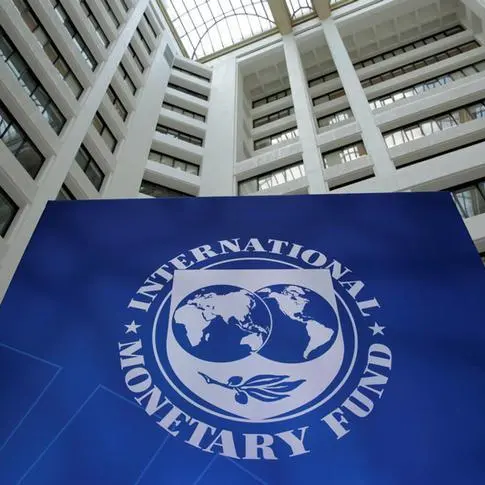PHOTO
The gross domestic product (GDP) of the GCC will grow by 2.1% this year, after the 5% contraction seen in 2020, a report said, noting as business confidence in the region has strengthened in recent months as coronavirus restrictions eased and vaccination rollouts progressed.
However, while there are positive signs for recovery in the second half of this year and beyond, economies still remain far from their pre-pandemic levels, according to the latest Economic Insight report for the Middle East compiled by Oxford Economics and commissioned by ICAEW.
The Middle East’s regional GDP will grow by 2.4% this year, a similar rate to the region’s average growth trajectory in the last decade, and an improvement from the 4.4% it shrank by in 2020, it said.
Oil production cuts are weighing on output, and new Covid-19 outbreaks have forced tighter lockdown measures in recent weeks, disrupting the recovery process. However, strong Purchasing Managers’ Index (PMI) readings indicate growth accelerating in the coming months, boosted by rapid vaccine rollouts in several countries that will help domestic activity move back towards normality.
The region’s economies are in a good position to capitalise on the surge of travel demand when the rest of the world opens up. Preparation for various regional events, such as Expo 2020 in Dubai and the 2022 FIFA World Cup in Qatar, an easing of regional tensions and spending by the Saudi Public Investment Fund (PIF) will also support growth.
Although global Covid-19 cases are still high and new outbreaks are being reported daily, the pandemic looks to be under control in China, Europe and the US. And with the summer tourist season approaching, oil demand is increasing. This, alongside ongoing supply reductions from Opec+ producers, has stabilised the oil price at above $65per barrel (pb), and $64.4pb for Brent crude in 2021, up from $62. However, given the continuously fragile demand outlook and plentiful scope for stronger supply growth, the upside for oil prices will remain limited through 2022 and 2023 and the report forecasts Brent to average US$61pb during that period.
Michael Armstrong, FCA and ICAEW Regional Director for the Middle East, Africa and South Asia (MEASA), said: “The outlook for most Middle Eastern economies looks positive this quarter, but keeping coronavirus levels low will be essential to ensure economies can return to growth.
Governments across the region must keep developing sectors and industries that foster innovation, and continue implementing reforms to diversify economies and accelerate them into the post-Covid era.”
Given the high reliance on the oil sector for growth, and countries’ vulnerability to rising temperatures, climate change is also an increasingly important issue in the GCC region and is receiving a sharper focus in diversification plans in countries such as Saudi Arabia and the UAE. Saudi Arabia’s Green Initiative, for instance, aims to cut CO2 emissions in the Middle East by 60% by 2030 and begin generating half of the country’s electricity from renewables.
With many sectors, including much of industry and even travel and tourism, relatively oil-intensive, the authorities recognise they can’t continue business as usual as they will be exposed to international policies to tackle climate change such as carbon taxation and border carbon adjustments.
Scott Livermore, ICAEW Economic Advisor and Chief Economist at Oxford Economics, said: “The rise in the oil price has boosted revenue prospects for GCC producers, which derive 40-90% of total fiscal income from oil. Higher oil revenue gives governments more scope to support post-pandemic recoveries without undermining efforts aimed at improving medium-term fiscal sustainability.
“Climate change is a big risk to the economy and society. Without a significantly expanded mitigation effort, the MENA region, which already suffers from climate-related issues like water scarcity, is likely to have major economic consequences that could have pronounced economic impacts by 2050.”
The Economic Insight report also outlined a sizeable increase in growth prospects in Iran from the potential return to the Joint Comprehensive Plan of Action (JCPOA) and the lifting of sanctions. Although its economy would only regain its pre-sanctions size in 2023 at the earliest, an increase in oil exports would raise GDP growth considerably over the next few years, with a positive impact felt in both the oil and non-oil sectors.
Elsewhere, Lebanon has made no progress in tackling its deep economic crisis over the past three months. Government formation remains deadlocked and the population is struggling to cope with soaring inflation, fuel shortages and progressively longer power cuts. Reduced access to subsidised goods will also exacerbate the distress, and the report forecasts GDP to fall by 5.3% in 2021, following an estimated 25% plunge last year. In Iraq, short-term growth prospects remain subdued, though an upturn in oil production is expected to provide some fiscal relief. – TradeArabia News Service
Copyright 2021 Al Hilal Publishing and Marketing Group Provided by SyndiGate Media Inc. (Syndigate.info).












